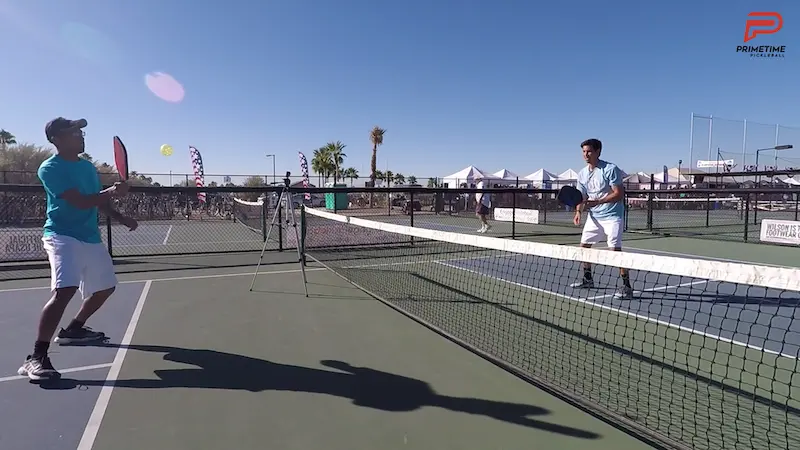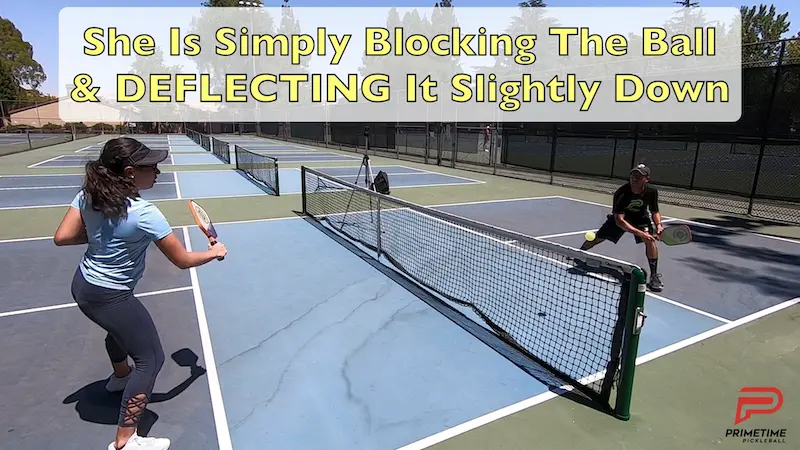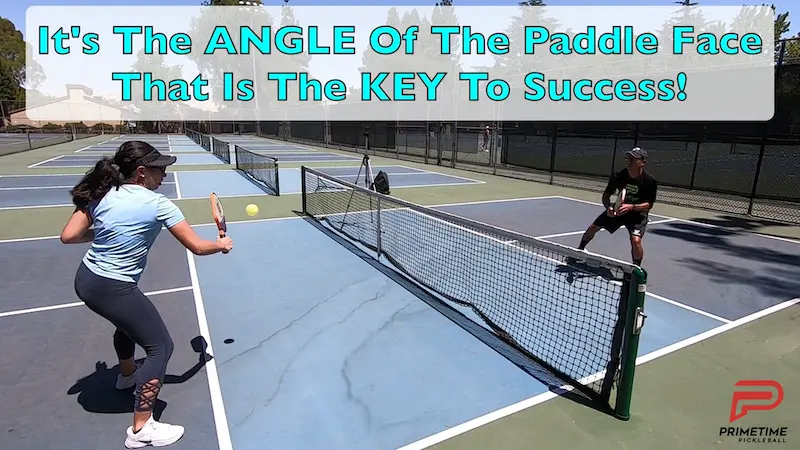Are you losing volley exchanges at the net? If that’s you. This blog is for you.
If you find yourself losing a lot of volley exchanges against players that are really good at volleying this blog will be helpful to you.
These are some tips that you can use when you’re up at the net along with your opponents.
It’s okay to get into a shootout with them and hit hard at them with shots that they’re able to contact at or above the height of the net as long as you’re quite confident you will come out on the winning end of that exchange most of the time. Meaning, you have good control at high speeds and generally have faster hands than your opponent and can beat their reaction time.
The more players out there that you can beat in a head-to-head shootout, the better.
This is definitely a skill you’ll want to develop.
One of the best ways to train that is to do high-speed volley exchanges back and forth, directly at each other. This way you can get comfortable being in a shootout.

You will certainly find yourself in that type of battle on the pickleball court. If you’re faster and better then you will win.
Drilling in this way will definitely help improve your hand speed and ability to overpower more players outright.
As you get better and better at this skill however, you will certainly come up against players that are great at this as you move up in levels so you will want to find a different way to deal with the situation.
We’ll cover that now.
If you are playing against players that have really good hands and they have great volleys this is something that you can work on to help you win more points at the net.
A lot of the times when players are beating you with their fast hands and their volleys you’ll find that you’re just actually feeding them the ball that they want.
They’re speeding up the ball to you because they know that they have an advantage when you get into a volley exchange.
Work on keeping the ball down instead of hitting it hard.

If you’re trying to beat them by hitting the ball back hard that won’t work because they are already trying to outpace you and defeat your reaction time.
You should work on hitting a firm volley but not quite a reset shot that you reset into the kitchen. You don’t want to hit a rest because a reset shot could still bounce up and they could attack again.
The ball you want to hit is a firm blocked volley that is going to force their contact point to be lower than the net, around knee level or even maybe lower.
When a player is speeding up the ball at you they are looking for that next ball. They know that you might be able to block it or maybe defend but they are going to try to keep beating you with pace.
When opponent speed up the ball at you, what most people do is volley it right back at them right, at their wheelhouse, at their sweet spot, where they’re already set up with their paddle. Then, your opponents are going to hit that next ball hard at you or even down at you first.
When you get into a volley exchange the main thing you want to think of is “who can get the ball down first”?
What we mean by “down” is who can get their opponent to contact that ball below the net and low.
Something that you can do to practice this is go out there with a partner and feed some balls.
The first one’s going to go right to your practice partner’s torso and then from there they could actually try to get it down and try to get you to hit a low contact point.
When hitting the volley you should have a compact take back and follow through. You are simply blocking the ball and deflecting it slightly down.
It’s the angle of the paddle face that is the key to success for this shot.

You’ll notice that it doesn’t take much to get the ball down.
As your practicing, you’ll be hitting hard volleys with a lot of pace. Keep your volley firm and start to think about not giving them the ball that they want.
They want balls that they could contact at net level or a little bit higher. They’re purposely hitting you fast balls so that they can get that ball high ball so they can hit even harder on the next one.
Keep your volley firm. Your grip pressure should be in the mid range, probably around five to seven.
Like we said, this is not a reset volley where it bounces off your paddle and it drops/land in the kitchen. That’s a little bit different.
This is solid, medium pace, volley that you’re hitting low at their feet.
What that’s going to do is it’s going to really make them stretch and reach and get a low contact point.
That’s going to put you in the driver’s seat of the volley exchange.
Go out with a partner and work on this.
It’s going to make your game a lot better and it’s going to make it easier to deal with people who like to speed up the ball.